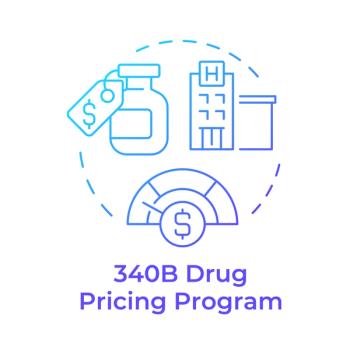
Parkinson’s disease: Unmet needs to be fulfilled by novel therapies and reformulations
The current global Parkinson’s disease market is characterized by a number of unmet needs, which include addressing the motor complications of dyskinesia and off-episodes. The recent approval of novel therapies and reformulations of existing drugs has the potential to fulfill some of these unmet needs, particularly in patients with advanced disease.
LeachThe current global Parkinson’s disease market is characterized by a number of unmet needs, which include addressing the motor complications of dyskinesia and off-episodes. The recent approval of novel therapies and reformulations of existing drugs has the potential to fulfill some of these unmet needs, particularly in patients with advanced disease.
Related:
Parkinson’s disease is the second most common neurodegenerative condition in the world, affecting 3.4 million people in the 8 major markets (8MM; United States, France, Germany, Italy, Spain, United Kingdom, Japan, Brazil) in 2014. According to GlobalData’s recent report,
In patients with Parkinson’s disease, a combination of risk factors, including age as well as environmental and genetic factors, leads to the loss of dopaminergic neurons within the substantia nigra and the accumulation of proteins known as Lewy bodies. The most frequent initial symptom is resting tremor. Other symptoms may include bradykinesia, a hunched gait, and loss of the sense of smell. As the disease progresses, bradykinesia, rigidity, and instability become more pronounced, causing moderate-to-severe disability in the later stages.2,3
Current management
Initially, Parkinson’s disease is controlled by monotherapy, most frequently with levodopa, a dopamine agonist, or a monoamine oxidase B (MAO-B) inhibitor, such as Azilect (rasagiline,
Polypharmacy: standard of care for motor complications in advanced Parkinson’s disease
Advanced Parkinson’s disease is difficult to manage due to the significant loss of dopamine receptors. The optimal concentration of dopamine is narrowed, and the pulsatile administration of levodopa leads to alternating periods of dyskinesia and off-episodes. Dyskinesia refers to uncontrolled movements caused by levodopa, and off-episodes are periods of bradykinesia that occur between doses of levodopa. Both are common motor complications in Parkinson’s patients and represent a major unmet need. In addition to the use of the drugs mentioned previously as monotherapies for early Parkinson’s disease, a catechol O-methyltransferase (COMT) inhibitor or an adenosine 2A (A2A) inhibitor may be added.3,4 An alternative strategy to pulsatile levodopa administration is continuous administration of the drug, which holds promise for both early- and late-stage patients by preventing or delaying the emergence of motor complications and by offering superior control of these symptoms once they set in.
New drug approvals
January 2015 was a notable month for Parkinson’s disease, as 2 levodopa-based products gained FDA approval:
Related:
New extended-release carbidopa/levodopa capsule improvement over immediate-release levodopa but reimbursement challenges
This carbidopa/levodopa extended-release capsule was approved for patients with both early and advanced Parkinson’s disease, with a lower starting dose recommended for patients who are naïve to levodopa. The APEX-PD trial enrolled 381 levodopa-naïve patients and used the
This new carbidopa/levodopa extended-release formulation has been shown to benefit both early and advanced Parkinson’s patients, and physicians agree that continuous levodopa therapy could theoretically prevent the emergence of off-time and dyskinesia when used as an early treatment. Its initial use, however, will primarily be for advanced patients. For early patients, the prohibitive cost of roughly $2500 per patient per year, compared with $450 per patient per year for a generic form of the immediate-release formulation, will discourage its use. Although this extended-release formulation is more expensive for advanced patients, who will use the drug more frequently, at an estimated cost of $5000 per patient per year, there are obvious benefits that outweigh the cost. In addition to the positive clinical trial data cited previously for the new extended-release capsule, patients on extended-release formulations may need fewer doses per day, which is a significant advantage for patients who require medications every 2 hours.
Carbidopa/levodopa enteral suspension meets needs of advanced patients but high price
FDA’s approval of the carbidopa-levodopa enteral suspension is a long-awaited win for Parkinson’s disease patients in the United States. Originally developed by
Although this enteral suspension is likely to change patients’ lives for the better, it is only expected to be used to treat a small subset of the Parkinson’s population due to its high price and the invasive nature of the therapy. With a price point of roughly $88,000 per patient per year in the United States, it far exceeds the cost of the next highest-priced Parkinson’s drugs on the market-
Parkinson’s disease market growth expected through 2022
In addition to these major developments in the US Parkinson’s disease market, in February 2015, the
Read next:
References
GlobalData. PharmaPoint: Parkinson’s Disease – Global Drug Forecast and Market Analysis to 2022 – Event-Driven Update. June 2015.
Davie CA. A review of Parkinson’s disease. Br Med Bull. 2008;86:109–127.
National Collaborating Centre for Chronic Conditions. Parkinson’s disease. National clinical guideline for diagnosis and management in primary and secondary care. NICE Clinical Guidelines, No. 35. London, United Kingdom: Royal College of Physicians; 2006.
American Academy of Neurology. Treatment of parkinson disease with motor fluctuations and dyskinesias. Current guideline. April 2006.
Duopa [prescribing information]. North Chicago, IL: AbbVie; 2015.
Pahwa R, Lyons KE, Hauser RA, et al; APEX-PD Investigators. Randomized trial of IPX066, carbidopa/levodopa extended release, in early Parkinson’s disease. Parkinsonism Relat Disord. 2014;20(2):142–148.
Hauser RA, Hsu A, Kell S, et al; IPX066 ADVANCE-PD Investigators. Extended-release carbidopa-levodopa (IPX066) compared with immediate-release carbidopa-levodopa in patients with Parkinson’s disease and motor fluctuations: a phase 3 randomised, double-blind trial. Lancet Neurol. 2013;12(4):346–356.
Olanow CW, Kieburtz K, Odin P, et al; LCIG Horizon Study Group. Continuous intrajejunal infusion of levodopa-carbidopa intestinal gel for patients with advanced Parkinson’s disease: a randomised, controlled, double-blind, double-dummy study. Lancet Neurol. 2014;13(2):141–149.
Newron Pharmaceuticals. Xadago (safinamide) New Drug Application (NDA) accepted for filing by the U.S. Food and Drug Administration (FDA). March 2, 2015.
NHS England. NHS England announces annual investment decisions for certain specialised services. July 2, 2015.
Heather Leach is an analyst at
Newsletter
Get the latest industry news, event updates, and more from Managed healthcare Executive.






















































